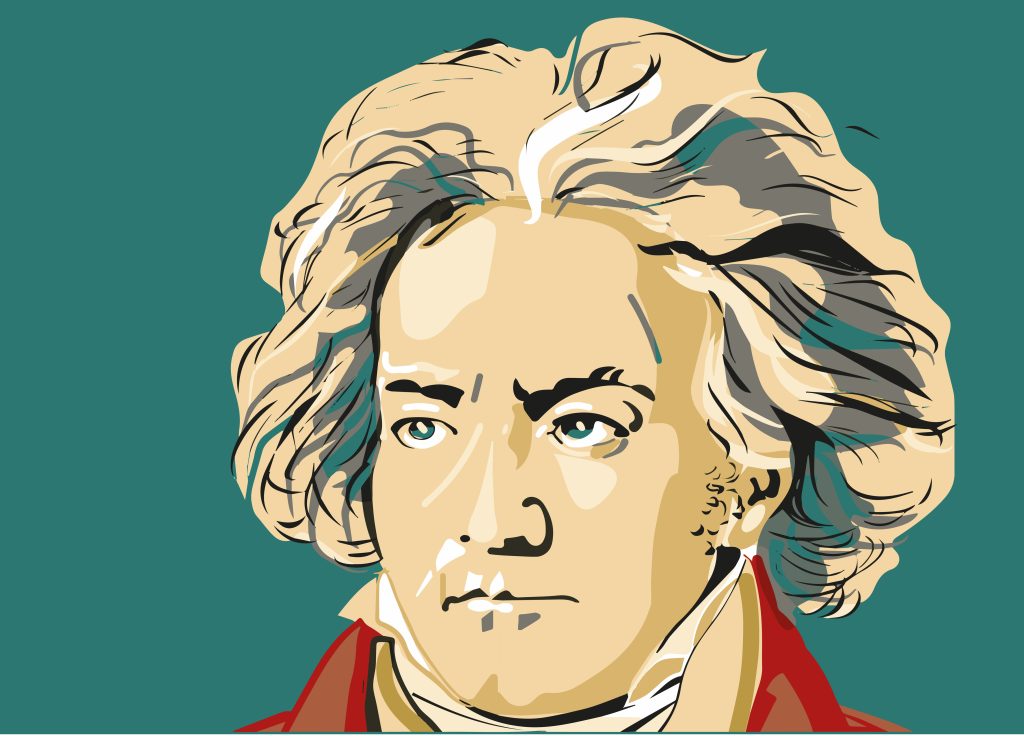
Beethoven’s Career: Key Moments and Transformations
Key Moments That Defined Beethoven’s Career
Early Years and Musical Beginnings
Ludwig van Beethoven, born in Bonn, Germany in 1770, is widely regarded as one of the most preeminent composers in the history of Western music. His early exposure to music was through his father, Johann van Beethoven, who was also a musician. Beethoven’s father’s rigorous and often harsh training sessions were the foundation of his early musical education. Despite the challenging circumstances, Beethoven’s prodigious talent was evident from a young age. This period was crucial in shaping his future as a composer and musician.
Move to Vienna and Studies with Haydn
In 1792, Beethoven moved to Vienna, which was then the epicenter of musical innovation and creativity. This move was pivotal in his career. In Vienna, he studied with Joseph Haydn, a leading composer of the time. Under Haydn’s tutelage, Beethoven honed his skills and expanded his musical knowledge. However, their relationship was complex, and Beethoven often felt that Haydn did not fully appreciate his talent. Nonetheless, this period was instrumental in Beethoven’s development as a composer.
Establishing a Reputation in Vienna
Beethoven quickly established himself as a piano virtuoso in the Viennese musical circles. His ability to improvise and his powerful style of play garnered him significant attention. He was also gaining recognition as a composer. His early works, such as the Piano Concertos No. 1 and No. 2, showcased his mastery and innovation in composition. These works helped solidify his reputation as one of the leading musicians in Vienna.
The Heiligenstadt Testament and the Onset of Deafness
One of the most significant and challenging moments in Beethoven’s life was the onset of his hearing loss. By 1802, his hearing had deteriorated significantly, leading to a profound personal crisis. This crisis was reflected in a document known as the Heiligenstadt Testament, a letter written to his brothers expressing his despair and isolation due to his deafness. However, this period also marked a turning point in his music. He began to compose in a new and more personal style, evident in works like the “Eroica” Symphony (Symphony No. 3).
The Middle Period: Heroic Phase
The years following the Heiligenstadt Testament marked what is commonly referred to as Beethoven’s ‘Heroic’ phase. During this time, he composed some of his most famous works, including the Fifth Symphony, the “Pastoral” Symphony (No. 6), and the “Appassionata” Sonata. These compositions were characterized by their dramatic intensity, structural innovation, and emotional depth. The Fifth Symphony, in particular, with its iconic four-note motif, became one of the most recognized pieces in classical music and a symbol of Beethoven’s genius.
Later Period and Innovations in Music
The later period of Beethoven’s career, beginning around 1815, was marked by further innovation and exploration in musical composition. Despite his worsening deafness, Beethoven’s creativity did not wane. This period saw the creation of some of his most profound and complex works. The Ninth Symphony, with its choral finale “Ode to Joy,” was a groundbreaking piece that combined vocal and orchestral music in a symphony for the first time. This work symbolizes the triumph of hope over despair and remains a testament to Beethoven’s genius.
Beethoven’s Late String Quartets
Beethoven’s late string quartets, composed between 1824 and 1826, are considered some of the most profound and introspective works in the chamber music repertoire. These quartets, including the famous Quartet No. 14 in C♯ minor, Op. 131, are known for their structural complexity, emotional depth, and innovative use of counterpoint. They pushed the boundaries of the string quartet form and are seen as precursors to the musical developments of the 20th century.
The Influence of Personal Struggles on His Music
Throughout his life, Beethoven faced numerous personal challenges, including his struggle with deafness, turbulent relationships, and financial difficulties. These struggles profoundly influenced his music, infusing it with a depth of emotion and an expression of the human spirit. Works such as the Piano Sonata No. 23 in F minor, Op. 57 (Appassionata), reflect his personal turmoil and his ability to transform suffering into artistic expression.
Beethoven’s Legacy and Impact on Future Generations
Beethoven’s influence on the world of music is immeasurable. He is credited with bridging the Classical and Romantic eras in music, introducing new ideas in harmony, form, and expression. His compositions inspired future generations of composers and musicians, and his legacy continues to resonate in the world of classical music. Beethoven’s life and work are a testament to the enduring power of music to convey the deepest emotions and experiences of humanity.
Conclusion
Ludwig van Beethoven’s career was defined by groundbreaking compositions, personal struggles, and a relentless pursuit of musical innovation. From his early years in Bonn to his final days in Vienna, his life was a journey of artistic discovery and personal triumph over adversity. His music, which ranges from intimate piano sonatas to grand symphonies, continues to inspire and move audiences around the world, cementing his place as one of the greatest composers in history.